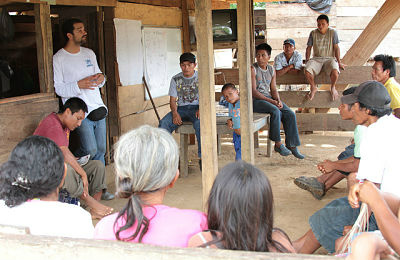10 Important Facts About Refugees in Panama

Panama is a country located on the isthmus between Central and South America which hosts thousands seeking asylum from nearby countries such as Nicaragua and Venezuela. However, the majority of refugees in Panama come from Colombia.
Over more than 50 years of drug-related conflict, 6.6 million Colombians have been forced to leave their homes. An estimated 370,000 Colombian refugees live in countries near their own, and Panama is a major hub. Below are ten facts about refugees in Panama and organizations working to improve their circumstances.
- Panama is a possible destination for refugees because of its relative safety and proximity to countries currently at war. As a result, many applications go unreviewed for years due to high volume. Of 893 requests for asylum in Panama from Colombia last year, just 28 went under review, of which 23 were accepted.
- Also, few Colombian refugees receive Refugee Status Determination (RSD), meaning deportation is a constant possibility. Without the direct support of a governing body, there is no guarantee of essential resources and safety.
- Due to a lack of documentation, Colombian refugees in Panama have little job security. Sometimes, refugee families cannot afford to stay.
- Fortunately, organizations identify these gaps and step in to help. The Norwegian Refugee Council (NRC) offers legal services and counseling to Colombian refugees in Panama, helping them to achieve official refugee standing and to defend their property rights.
- The NRC aims to empower refugees in the context of the law as a whole. The staff at a convenient Panama-based office train authorities to maximize their ability to help, escort new asylum seekers to refugee commissions and ensure a basic understanding of the law so refugees can avoid falling victim to crime.
- In 2016, the Office of the United Nations High Commissioner for Refugees (UNHCR) issued an initiative to improve resources and security for refugees in some Latin American countries, Panama included. The appeal calls for $18.1 million to ensure housing, child protection and related resources. So far the appeal has fulfilled nearly half of these requests.
- Closely following these efforts, the UNHCR supported the release of the San Jose Action Statement, in which nine countries across North and Central America agreed to protect those struggling to flee danger in their home countries.
- Participating countries will formulate solutions to keep refugees safe as they cross borders. Implementing the use of clear, abundant documentation and creating access to legal services are foundational elements of the plan.
- The process also includes training national officials according to the concerns of refugees, with a specific focus on law and policy. This step is already in motion in all nine participating countries.
- Protecting refugees in Panama and ensuring them basic resources will mean extensive data collection. This plan is an endeavor that has presented a challenge already, as there is little existing protocol. Countries continue brainstorming to troubleshoot such issues.
Though technicalities pervade—and sometimes inhibit—the flow of refugees from places of conflict into Panama, the work of compassionate nations and organizations like NRC and the U.N. promise smoother transitions. With their continued efforts, the experiences of refugees in Panama are bound to keep improving.
– Madeline Forwerck
Photo: Flickr
